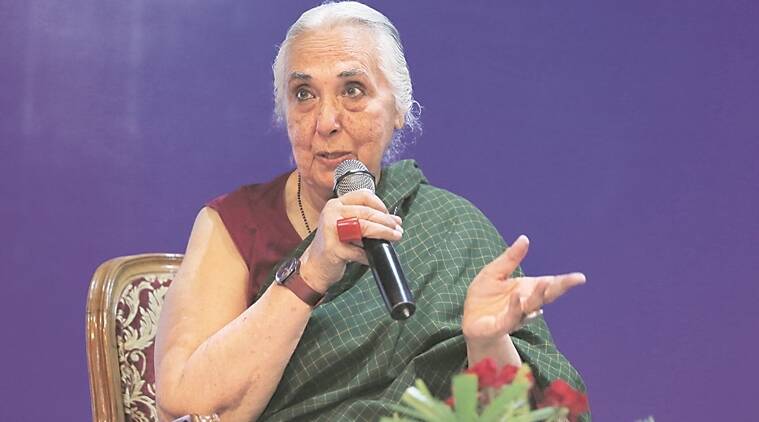
Buddhism was very popular in Punjab during the Mauryan and post-Mauryan period.
[Eminent historian Romila Thapar’s speech at the History for Peace Conference held in Chandigarh in May 2019]
Navjeevan Gopal
At a time when religion is increasingly taking the center stage in political discourse, noted historian Romila Thapar told students at Saint Kabir Public School here that in ancient texts people described themselves as belonging to a particular sect instead of categorizing themselves as a Hindu, Muslim or Sikh.
Speaking at the History for Peace Conference, she said the division of religions was not watertight in ancient India and there was a “floating body of worshippers” who were fluid in their beliefs. “By the 15th century, we had in Punjab three simultaneous religious streams — each not watertight. An extremely important aspect was of overlapping,” said Thapar. She said while Puranic Hinduism was practiced in hill kingdoms, Nath jogis were found in northern lowlands and Sufi Chishtis in Southern Doab.
Thapar said that Sufis and Nathpanthis were into borrowing ideas from each other. “Nathpanthis,” she pointed out, “cannot be put into the bracket of Hinduism.” Speaking on conversions, Thapar said the major conversions were done by the Sufis, who traced their origin to Persia and Central Asia and were Naqashbanis or Chishtis, and did not represent either Sunni or Shia sects of Islam.
She said it would be interesting to find out whether people of lowlands found the ideology of Sufis and Nathpanthis more flexible and attractive than Puranic Hinduism or Quranic Islam teachings, which were more rigid and regulated.
Gently poking fun at what she termed “mythology”, Thapar narrated how writers describing foreign invaders and conversions were fixated with the number 50,000 when it came to the count of “kaafirs (non-believers)” converted by them.
Buddhism in Punjab
Thapar said Buddhism was very popular in Punjab during the Mauryan and post-Mauryan period.
Bookended between Gandhara in Taxila on the one side where Buddhism was practiced on a large scale and Mathura on another side where Buddhism, Jainism and Puranic religions were practiced, this religion flourished in the state. But after the Gupta period, Buddhism began to decline.
Along the main highway in Punjab, Thapar said, there were Buddhist sites near Sanghol which were buried. “Railings were taken down and structures buried. Why did they dismantle the stupas and bury those? Was there a threat?” said Thapar. “There was a gradual decline in the patronage of Buddhism…The bigger question is whether it was related to Buddhist teachings or something else,” she added.
No water-tight Varnas
Thapar said rulers in the hill states started mixing religion with politics when they began to grant land to Brahmins.
The Varnas too were not watertight. “Were they based on existing hierarchy and the work one performed? Was the hierarchy flexible? A comparative study is required.”
Thapar cited an inscription in a temple at Pehowa, which said that wealthy Brahmins were horse traders.
Pointing out that in “dharma shastra”, it was Kshatriyas who traded in horses, she asked, “How did it get adjusted…was there a degree of competition? Was it limited or extended to the Ganges?”
_______________
Courtesy: Indian Express